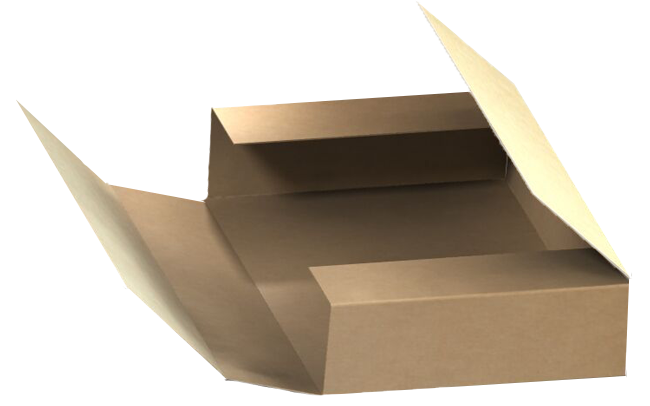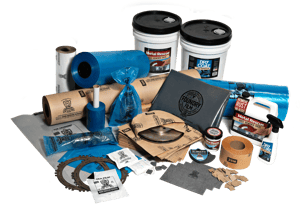M-Line Blog

The Cost of Rust: Why You Can’t Afford to Ignore It

For companies who deal with metal and metal parts, rust can quickly become a big problem. It delays production, shuts down assembly lines, increases scrap costs and ruins the functionality of important machinery. In the end, rust costs companies time, resources and billions of dollars each year.
What is Rust?
Rust (or iron oxide as it is technically known) is the chemical reaction that results when iron (or metals containing iron, such as steel), oxygen and water come together.
Visually, rust can appear in a color spectrum that ranges from yellow to black. Each shade is an indicator of the environmental conditions that contributed to its formation. For example:
- Yellow rust forms as a result of high moisture content. It appears to run and drip and is frequently found in settings where puddled/standing water has been present.
- Red rust is the result of heavy exposure to air, moisture and a contaminate like salt.
- Brown rust is drier and is caused by high oxygen and low moisture or by contamination during the manufacturing stage.
Compare rust to an iceberg — it’s not what you can see above the surface of the water that is most destructive, but rather it’s what you can’t see that can do the most harm.
The same is true of rust and corrosion. Often it’s the things that aren’t visible or that are less obvious that result in the greatest damage. The good news is, with just a few small, preventative measures upfront, companies can stop rust before it starts.

How Can I Prevent Rust?
Check out this list of the most commonly used strategies to prevent rust:
Control the Environment
Managing the environment where metal parts are kept to protect them from exposure to water/humidity and other chemicals is a great first step in preventing rust.
Measures such as covering and storing metal parts raised off of the floor; minimizing their exposure to water due to flooding, melting snow/ice, pipe leaks or condensation; and storing them inside a temperature and humidity-controlled environment are fairly simple and effective.
Metal Selection
There are some select metals that are rust-resistant. Using an alloy (a mixture of metals) such as stainless steel will help to prevent rust because they contain elements such as chromium and zinc that form a protective film on the surface of metal. Combining the properties of select metals adds strength and resistance, but while it is an effective option, it can be very expensive.
Preventative Coatings
The most widely used method of rust prevention is the application of a coating on the surface of metal. The coating acts as a barrier to prevent corrosive elements (such as water, oxygen or chemicals) from contact with metal. Examples of preventative coatings include:
-
- Oil: Oil or grease applied to the surface of metal inhibits moisture from contact with metal, thereby slowing down or preventing rust formation. However, oil and greases can be problematic for some tools or machines and can pose environmental and human health concerns.
- Galvanization: Galvanizing coats the surface of iron or steel with zinc to prevent corrosive substances from penetrating the metal. Zinc corrodes at a much slower rate than iron or steel, so it’s highly effective in slowing rust. Galvanization can be challenging because typically metal parts/equipment must be sent to an offsite location for its application.
- Oil: Oil or grease applied to the surface of metal inhibits moisture from contact with metal, thereby slowing down or preventing rust formation. However, oil and greases can be problematic for some tools or machines and can pose environmental and human health concerns.
-
- Paint: Covering the surface of metal with a good quality paint prevents moisture from making contact with the surface of the metal and slows down rust formation. Paint must be applied properly to avoid chips or cracks that could allow corrosion to set in.
- Powder Coat: Metal is coated with a dry powder made of acrylic, polyester, nylon or other substances, then cured with heat to form a thin protective film. The downside of powder coating is it can be difficult to apply a thin, uniform coating and the cost for setup can be expensive.
- Dry Coat: There are rust-preventative liquids that offer good wetting properties (to ensure even application) and dry clean that are made specifically to protect metal from rust. These products contain additives that form a protective barrier on the surface of the metal that is nearly undetectable (they leave no residue behind) and they can be used alone or in combination with other rust prevention efforts.
- Paint: Covering the surface of metal with a good quality paint prevents moisture from making contact with the surface of the metal and slows down rust formation. Paint must be applied properly to avoid chips or cracks that could allow corrosion to set in.
Preventing Rust in Packaging With Corrosion Inhibitors
Another option is Vapor Corrosion Inhibitors (VCI), a type of chemical compound that emits vapors to form a protective shield on the surface of metal. This displaces moisture and keeps metal safe from rust.
VCI is most commonly infused into packaging materials, such as paper or poly film, that are used to wrap or enclose metal parts. They work most effectively when used in an enclosed air space such as a storage container or shipping crate.
Using VCI packaging options can be much simpler than many of the above methods because you don’t need to rework the way your products are made - just the way they’re stored and shipped.
Problem Solved: M-Line & Armor Protective Packaging®
 M-Line carries the full line of rust prevention and rust removal products offered by Armor Protective Packaging®.
M-Line carries the full line of rust prevention and rust removal products offered by Armor Protective Packaging®.
ARMOR combines its proprietary VCI Nanotechnology™ (its top-shelf “secret recipe” for VCI) with paper, poly film, chipboard, foam pad and others to create dry packaging materials with the added benefit of rust prevention. Product lines Metal Rescue® Rust Remover and Dry Coat™ Rust Preventative are innovative water-based liquids designed to remove rust and prevent its return.
All ARMOR products are clean, safe, easy-to-use and they will save M-Line customers time, money and the effort to keep metal parts free from rust. To learn more or place an order for ARMOR products, just fill out our quote form and we’ll be in touch with you as soon as possible.
Request a Quote
This article was written by our friends at Armor and edited by us at M-Line.
